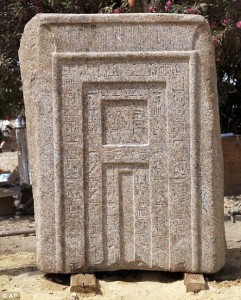Archaeologists working near the Karnak temple in Luxor have uncovered a six-foot-tall, 19-inch-thick slab of pink granite used as a false door through which the spirits of the dead traveled to and from the afterlife. Ancient Egyptians put these false doors in the west walls of tombs facing tables laden with victuals left for the spirits of the deceased.
The door is 3500 years old and the copious religious texts and inscriptions engraved on it indicate it used to be in the tomb of User, Queen Hatshepsut’s chief minister, and his wife Toy.
User held the position of vizier for 20 years, also acquiring the titles of prince and mayor of the city, according to the inscriptions. He may have inherited his position from his father.
Viziers in ancient Egypt were powerful officials tasked with the day-to-day running of the kingdom’s complex bureaucracy.
As a testament to his importance, User had his own tomb on the west bank of the Nile in Luxor, where royal kings and queens were also buried. A chapel dedicated to him has also been discovered further south in the hills near Aswan.
The door wasn’t actually found in his tomb, however. It was found quite away. According to Mansour Boraik, the head of the excavation mission, probably removed a thousand years after User’s death to be used in the construction of a Roman-era wall in front of the Karnak temple.
